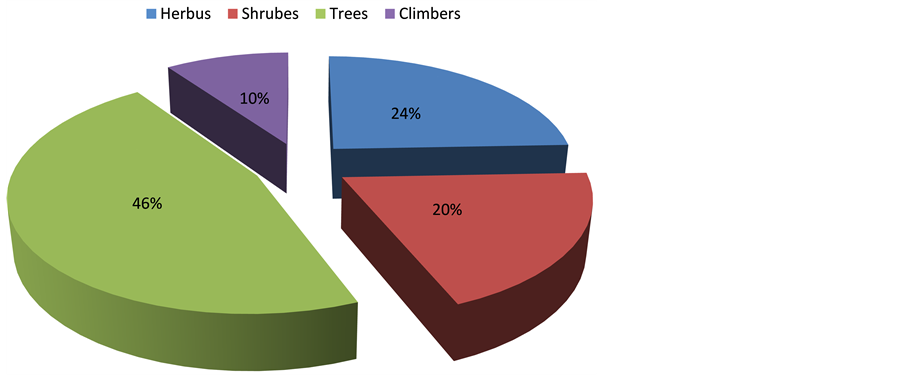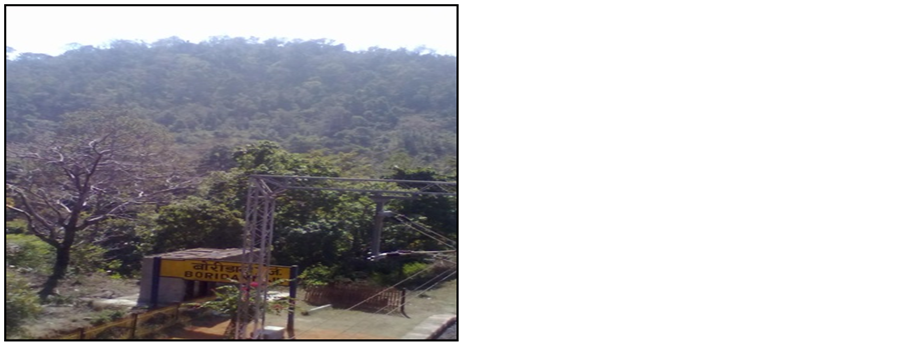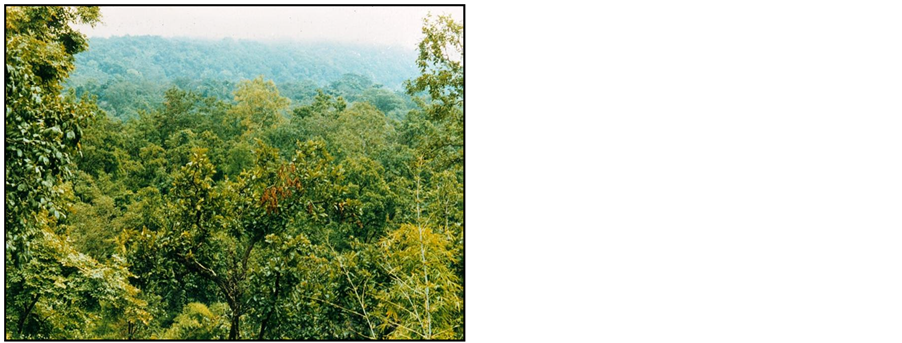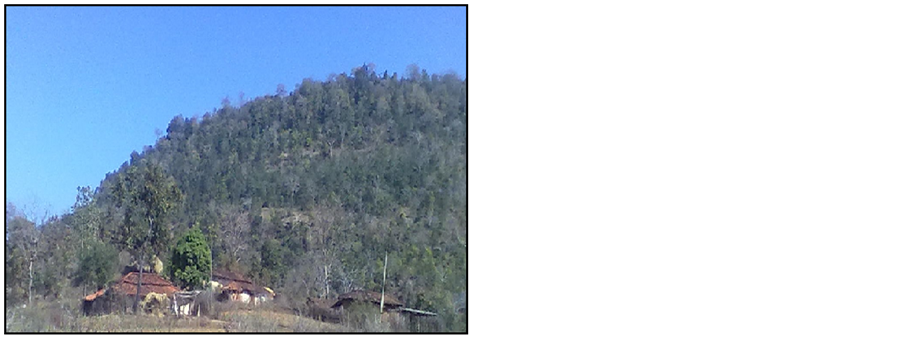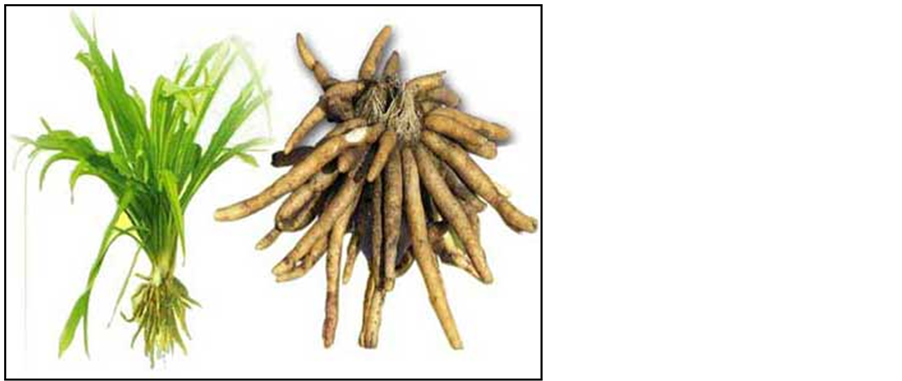American Journal of Plant Sciences
Vol.06 No.02(2015), Article ID:54158,12 pages
10.4236/ajps.2015.62047
Diversity of Ethnomedicinal Plants in Boridand Forest of District Korea, Chhattisgarh, India
Ramesh Kumar Ahirwar
Department of Botany, Govt. College Birsinghpur Pali, Umaria, India
Email: dr.rkahirwar@gmail.com
Copyright © 2015 by author and Scientific Research Publishing Inc.
This work is licensed under the Creative Commons Attribution International License (CC BY).
http://creativecommons.org/licenses/by/4.0/



Received 20 January 2015; accepted 14 February 2015; published 16 February 2015
ABSTRACT
Present study deals with an extensive ecological assessment of natural forest areas under several in-situ conservation plots which have resulted from high rate of grazing and biotic pressure. Over- exploitation of forest and unwanted incidental fire cases decreased the diversity of several ethno- medicinally and economically valuable plants species from the Boridand forest region in Korea district, Chhattisgarh. The total number of plants reported in all three study sites, 41 plants spe- cies belonging to 26 families and 37 plant genera were identified. A field survey was conducted at three different study sites in Boridand forest, district Korea, Chhattisgarh as Plot A, Plot B and Plot C, during months March 2013 to February 2014 to identify the diversity of ethnomedicinal plants.
Keywords:
Diversity, Conservation, Ethnomedicinal, Boridand Forest, Chhattisgarh

1. Introduction
Boridand forest is a beautiful hill station in the district Korea. There is also one of world lable mini Railway Junction (BRND) of South Eastern Central Railway (SECR). It is border line of Madhya Pradesh and Chhattisgarh State. Korea district lies between 23˚02'42'' to 23˚44'46'' north latitude and between 81˚46'42'' to 82˚33'43'' east longitude. Its height from sea level is 700 meters. Total area of the district is 5978 sq. km. The climate is ideal with a beautiful monsoon, a mild summer and bearable winter and average rainfall is 1410.9 mm. Korea’s average temperature is maximum 32˚C and minimum 17˚C. Total forest area is 350,420 hectares (59.3%). The total tribal population is 44.4%. The district is bounded on the north by Shidhi district of Madhya Pradesh on the south Bilaspur district on the east by its parent district Surguja and on the west by Shahdol district of Madhya Pradesh [1] [2] .
Korea district is one of the north-west district of Chhattisgarh State. The district came into existence on 25th May 1998 in Madhya Pradesh State. Its parent district was Surguja. After the formation of new state of Chhattisgarh on 1st November 2000, the district fell under the Chhattisgarh State [3] -[5] .
It is one of the hilly places of Korea district and hilly railway Junction. The forest vegetation of Boridand region is dominated by sal (Shorea robusta A. w. Roth.). The Boridand forest is scattered in Mahanadi forest range in Korea district. Korea district is divided into five blocks: Manendragarh, Bharatpur, Baikunthpur, Sonhat and Khadgawan [6] -[8] . The area of hilly places is thickly populated by various tribal communities like, Baiga, Agaria, Panika, Gonds, Orao, Kol, Korku etc. The density of Baiga and Korkua population is higher than others.
The most live in remote areas of deep forests [9] . The collection of medicinal plants, plant parts and thus uses from the forests are the main source of their livelihood. Due to close contact and association with forest, they have fairly good traditional knowledge of different valuable information of surrounding floras [10] -[12] .
They mostly depend on plants or food, fuel, house building, equipments, tools, basketry etc., on one hand, various ethnomedicinal plants or remedies for the alleviation of various ailments on the other hands [13] [14] .
2. Material and Methods
The present work was carried out in different Plot A, Plot B, and Plot C, of Boridand forest block Manendragarh district Korea, Chhattisgarh on ethnomedicinal drugs in the health care systems of tribes [15] .
During the ethno botanical survey (March 2013-February 2014) several local tribals and medicine man have been interviewed for recording the Traditional uses of ethnomedicinal plants species from the surrounding forests. Data was collected in field work proforma (Kumar, 2007) and (Masih, 2013) and (Panigarhi et al., 1989). An attempt was also undertaken in three in-situ plot having an area of on hectors each for ecological assessments [16] [17] . With the help of strip transect method data has been collected and density, frequency, abundance cover relative density relative frequency and relative abundance and cover IVI ( Important Value Index ) diversity contributory diversity percentage etc. were calculated [18] -[20] (Figure 1(a) and Figure 1(b)).
The Traditional information of 41 plants species are tabulated, Botanical name, parts of used and mode of uses [21] -[23] .
Some floristic diversity work in this area has been done by workers like Maheswari et al. (1964) Oommacha (1989), Hemadri (1989), Chopra (1956), Masih (2013), Verma (1995), Busia, (2005), Khan, et al (2008), Kala (2005, 2007) where as Miller (1990), Jain ( 1991), Jain et al. (1994) and Ahirwar (2014, 2011, 2010) highlighted the Traditional Knowledge of plants use by the ethnic peoples [24] -[26] (Table 1).
3. Results and Discussion
In the ethno botanical and ecological assessment study a total of 41 plants species belonging to 26 families and 37 plant genera and total number herbacious plants ten and shrubs plants eight and Trees nineteen and climbers only four number of plants have been identified from the in-situ plots. The IVI and diversity of each useful plant species are projected. The plant species like Abrus precatorius, Achyranthes aspera, Adhatoda vesica, Aegle marmelos, Andrographis paniculata and Argemone mexicana, Dalbergia sisso, Butea monosperma etc. were the dominant ethnomedicinal plant species from the in-situ plots. The average IVI value, diversity and number of plants presented [27] -[29] .
Highest value of contributory diversity percentage was observed in Butea monosperma (Lamk). (28.35), Abrus precatoris L. (26.58), Delbergia sisso Roxb. (26.14), Desmodium gangeticum (L.) DC. (24.64), Mucuna puriens L. DC. (20.61), Pongimia pinnata (L.) Pierre (18.76), Asparagus recemos Willd. (17.78), Chlorophytm arundinacuem Baker. (14.38), Bauhinia vahlii (Wt. & Arn.) Benth. (14.26) and Ficus recemosa Linn. (13.66) in Plot A, B and C respectively. Other species which represent less than 10% value need more protection and conservation for strengthening natural forest resource for future need and requirements of ethnomedicinal plants [30] [31] (Table 2) and (Figure 2).
4. Conclusions
The result of the present study indicated that the rich ethnomedicinal knowledge of the community should be
Figure 1. (a) Location map of India in Chhattisgarh State; (b) Representing the study sites of Korea district in Boridand forest.

Figure 2. Shows IVI of ethnomedicinal plants in Boridand forest district Korea Chhattisgarh, India.
Table 1. Shows ethno botanical observation of 41 plants species of different study sites of Boridand forest, Korea district, Chhattisgarh, India.
Abbreviations: Hb: Habit, H: Herbs, Sh: Shrubs, T: Trees, Cl: Climbers.
Table 2. Important value index, diversity of plants species in various plots at Boridand forest district Korea, Chhattisgarh, India.
documented and preserved properly for better utilization of the plant resources. Particularly, there is a need of detail study of the ethnomedicinal plants used by the tribals community with possible investigation which may highlight the true value of these plant species so that they can be managed and conserved for the benefit of the local community as well as for the welfare of mankind.
The present study represents of 41 ethnomedicinal plants species in Boridand forest area which belong to 26 families and 37 plant genera. There are 26 families under to herbs 24%, shrubs 20%, trees 46%, and climbers 10% identified and total 26 families in the highest diversity of family Fabaceae, Moraceae and Liliaceae were reported (Figure 3 and Figure 4). We also represent some ethnomedicinal plants, vegetation of forest, Baiga tribals huts and tribal healers photographs in Boridand forest district Korea, Chhattisgarh, India (Figure 5-13).
Figure 3. Distribution of ethnobotanical species in Boridand forest.
Figure 4. Showing comparative distribution of family and plant species in Boridand forest.
Figure 5. Vegetation of Boridand forest district Korea, Chhattisgarh, India.
Figure 6. Location of Baiga’s tribes hut’s.
Figure 7. Showing on ethnomedicinal plants of Baiga tribes and tribal healer.
Figure 8. Abrus precatorius L.
Figure 9. Mucuna puriens L. DC.
Figure 10. Chlorophytm arundinacuem Baker.
Figure 11. Curculigo orchioides Gaertn.
Figure 12. Caesalpinia bonducella Roxb.
Figure 13. Achyranthes aspera L.
Acknowledgements
Author is thankful to tribal and rural people for their co-operation and sharing their knowledge during study period.
References
- Agrawal, D.P. (1997) Traditional Knowledge Systems and Western Science. Current Science, 73, 731-733.
- Ahirwar, R.K. (2010) A Survey of Medicinal Plants Used by Tribals of Anuppur District, Central India. Indian Journal of Applied Pure Biology, 25, 227-230.
- Ahirwar, R.K. (2011) Ethnomedicinal Plants Studies in Jaitpur Forest range of Shahdol, District, Central India. Plant Science, 24, 681-684.
- Ahirwar, R.K. (2014) Utilization of Medicinal Plants by the Tribes of Bhatiya, District Shahdol, Madhya Pradesh. International Journal of Scientific and Research, 3, 149-151.
- Ahirwar, R.K. (2010) Ethnomedicinal Uses of Plant Roots from Shadol District of M.P. India. Indian Journal of Applied Pure Biology, 25, 71-76.
- Ahirwar, R.K. and Girja, K.S. (2011) Some Anti Diabetic Plants from Dindori District of Madhya Pradesh (India). Indian Journal of Applied Pure Biology, 26, 269-271.
- Biswas, T.K. and Mukherjee, B. (2003) Plant Medicines of Indian Origin for Wound Healing Activity: A Review. In- ternational Journal of Lower Extremity Wounds, 2, 25-39. http://dx.doi.org/10.1177/1534734603002001006
- Busia, K. (2005) Medical Provision in Africa-Past and Present. Phytotherapy Research, 19, 919-923. http://dx.doi.org/10.1002/ptr.1775
- Chopra, R.N., Nyar, S.L. and Chopra, I.C. (1956) Glossary of Indian Medicinal Plants. Council of Scientific and Industrial Research, New Delhi.
- Hemadri, K. and Rao, S.S. (1989) Folk Medicine of Bastar. Journal of Ethnobotany, 1, 61-66.
- Jain, S.K. (1963) Observation on the Tribals of Madhya Pradesh. Vanyajati, 11, 177-183.
- Jain, S.K. (1991) Dictionary of Folk Medicines and Ethnobotany. Deep Publications, New Delhi.
- Jain, S.K. (1981) Glimpses of Ethnobotany. Oxford & IBH, New Delhi.
- Jain, S.K. (1965) Medicinal Plant Lore of the Tribals of Bastar. Economic Botany, 19, 236-250. http://dx.doi.org/10.1007/BF02914310
- Jain, S.P. and Singh, S.C. (1994) Ethno-Medico-Botanical Survey of Ambikapur, Madhya Pradesh. IV ICE, Lucknow.
- Khan, A.A., Agnihotri, S.K., Singh, M.K. and Ahirwar, R.K. (2008) Enumeration of Certain Angiospermic Plants Used by Baiga Tribe for Conservations of Plants Species. Plant Archives, 8, 289-291.
- Kirtikar, K.R. and Basu, B.D. (1999) Indian Medicinal Plants. Vol. 3, International Book Distributors Book Sellers and Publishers, Deheradun.
- Kumar, K. (2007) Working Plan of North Surguja, Ambikapur. Forest Department, Government of Chhattisgarh, Raipur.
- Khan, A.A., Agnihotri, S.K., Singh, M.K. and Ahirwar, R.K. (2008) Observation of Certain Plants Used in Skin Diseases by Baiga Tribes of Mandala District. Plant Archives, 8, 283-284.
- Kala, C.P. (2007) Local Preferences of Ethno-Botanical Species in the Indian Himalaya: Implications for Environmental Conservation. Current Science, 93, 1828-1834.
- Kala, C.P. (2005) Indigenous Uses, Population Density and Conservation of Threatened Medicinal Plants in Protected Areas of the Indian Himalayas. Conservation Biology, 19, 368-378. http://dx.doi.org/10.1111/j.1523-1739.2005.00602.x
- Maheswari, J.K. (1964) A Contribution to the Flora Kanha National Park, Madhya Pradesh. Bulletin of Botanical Survey India, 5, 117-140.
- Masih, V., Sahu, P.K. and Singh, M. (2013) Observation on Ethno-Medicinal Herbs of Dantewada, Chhattisgarh, India. International Journal of Drug Discovery and Herbal Research, 3, 644-648.
- Miller, N.N. (1990) Traditional Medicine in East Africa. America Universities Field Staff Report, Vol. 22, 1-15.
- Oommachan, M. and Masih, S.K. (1989) Ethnobotanical Observations on Certain Forest Plants of Jabalpur (M.P.). Indian Journal of Pure and Applied Biology, 4, 73-78.
- Panigarhi, G. and Murti, S.K. (1989) Flora of Bilaspur District of Madhya Pradesh. Vol. 1, 46-71.
- Smvastar, S. (1996) The Flora of Western Tribals of Madhya Pradesh. Scientific Publishers, Jodhpur, 26-28.
- Singh, N.P., Khanna, K.K., Mudgal, V. and Dixit, R.D. (2001) Flora of Madhya Pradesh. Vol. 3, Botanical Survey of India.
- Tiwari, K.P., et al. (1995) Flora of Amarkantak for Detailed Project Formation to Constitution Amarkantak Biosphere Reserves. Draft Project, SFRI, Jabalpur.
- Verma, P., Khan, A.A. and Singh, K.K. (1995) Traditional Phytotherapy among the Baiga Tribe of Shahdol District of Madhya Pradesh, India. Ethnobotany, 7, 69-73.
- World Health Organization (2007) WHO Monographs on Selected Medicinal Plants. Vol. 3, Geneva.




